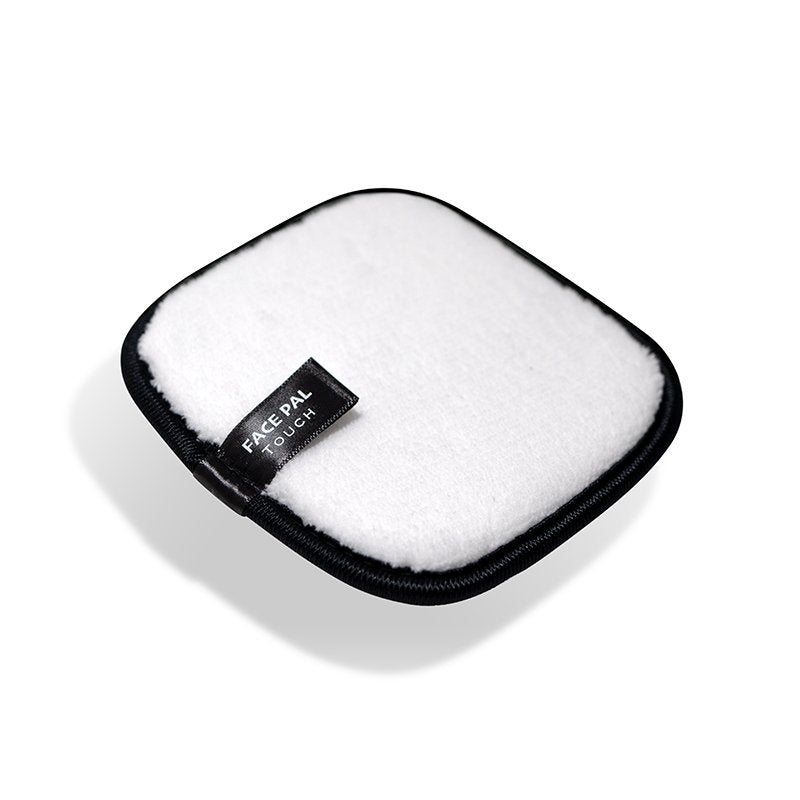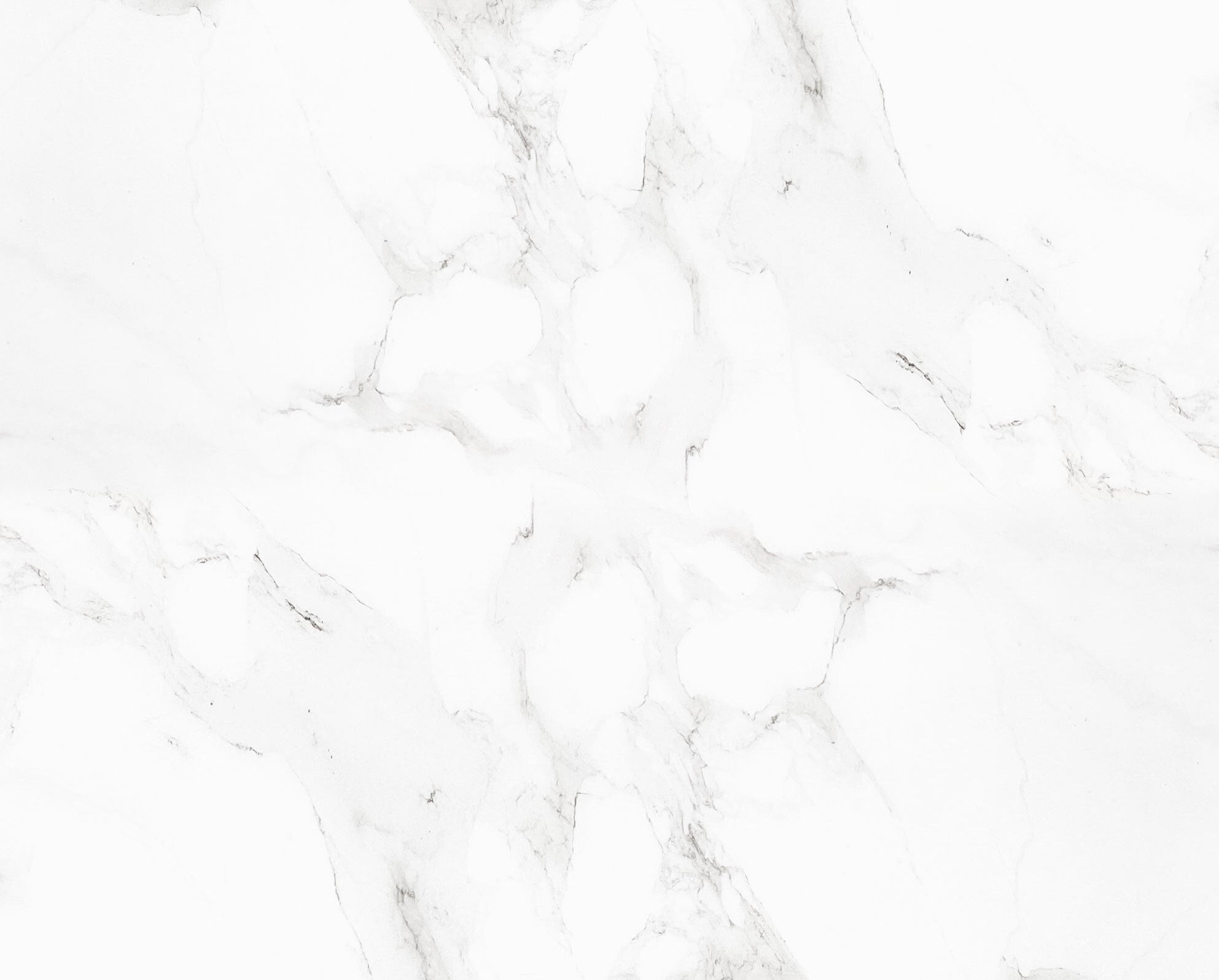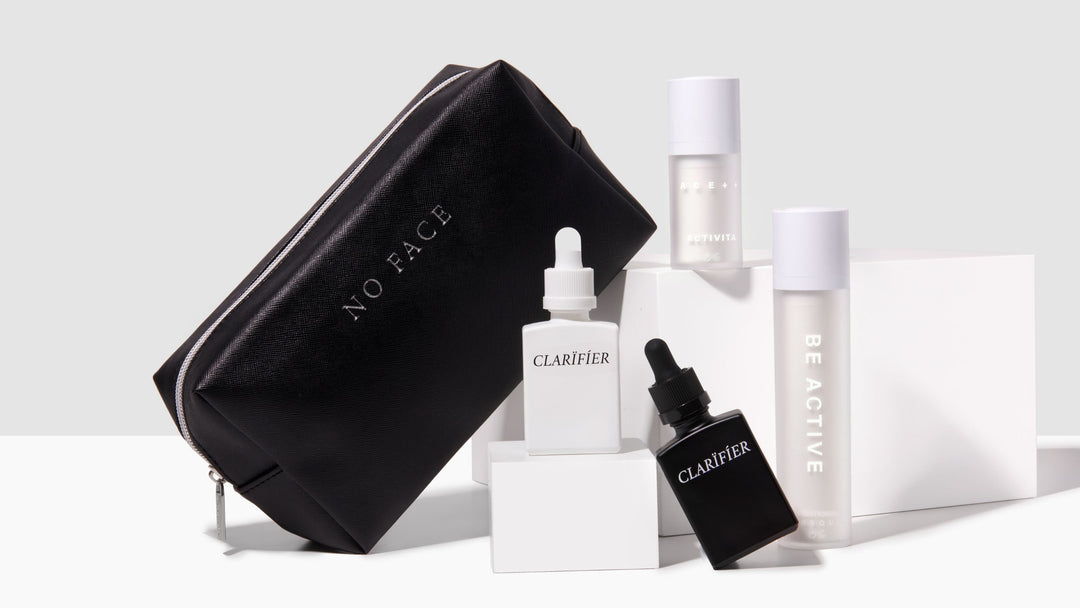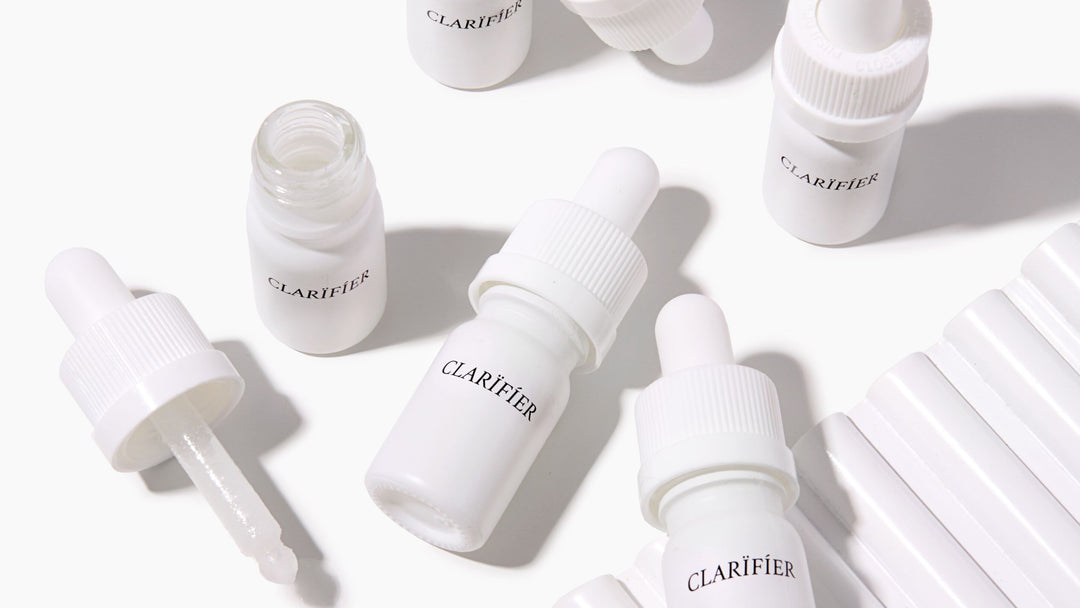Contents
- 1. Introduction
- 2. Understanding Oily Skin
- 3. Intrinsic Factors Contributing to Oily Skin
- 4. Extrinsic Factors Influencing Oily Skin
- 5. The Importance of Caring for Oily Skin
- 6. Consequences of Ignoring Oily Skin
- 7. Research Findings on Oily Skin
- 8. Oily Skin and Inflammation
- 9. Optimal Skincare Routine for Oily Skin
- 10. Additional Tips for Managing Oily Skin
- 11. Conclusion
1. Introduction
Oily skin is a common dermatological concern affecting individuals of all ages. This professional journal delves into the intrinsic and extrinsic factors contributing to oily skin, emphasizing the importance of proper skincare routines. Neglecting oily skin can lead to various consequences, including inflammation and other dermatological issues. Research highlights the significance of managing oily skin effectively to maintain a healthy and radiant complexion.
2. Understanding Oily Skin
A. Definition of Oily Skin:
Oily skin, also known as seborrhea, is a common dermatological condition characterized by an overproduction of sebum, a waxy, oily substance produced by the sebaceous glands. Individuals with oily skin often experience a shiny, greasy appearance on their face, particularly in the T-zone area (forehead, nose, and chin). Oily skin is often accompanied by enlarged pores, a tendency for frequent acne breakouts, and a general feeling of oiliness on the skin surface. While sebum plays a vital role in maintaining skin hydration and protecting against external irritants, excessive sebum production can lead to various skin issues if not properly managed.
B. Sebaceous Glands and Sebum Production:
Sebaceous glands are small, oil-producing glands found throughout the skin, with a higher concentration on the face, scalp, chest, and back. These glands are most active during puberty when androgens (male hormones) stimulate their development and enlargement. Sebum production is regulated by the complex interaction of hormonal signals, particularly androgens, and the sebaceous glands themselves. Sebum consists of triglycerides, free fatty acids, wax esters, squalene, cholesterol, and cellular debris. Its primary function is to lubricate and protect the skin, keeping it supple and hydrated. However, when the sebaceous glands become overactive, excessive sebum production occurs, contributing to oily skin.
C. Causes of Excessive Sebum Production:
- a. Hormonal Influences: Androgens, such as testosterone, play a crucial role in regulating sebum production. During puberty, androgen levels increase, leading to the enlargement and hyperactivity of sebaceous glands. Hormonal imbalances, including polycystic ovary syndrome (PCOS) or hormonal fluctuations during the menstrual cycle, can also contribute to excessive sebum production in adults.
- b. Genetic Predisposition: Oily skin can have a genetic component, with certain individuals inheriting a greater tendency for overactive sebaceous glands. Family history and genetic factors can influence sebum production rates, pore size, and skin texture.
- c. Environmental Factors: Climate and environmental conditions can influence sebum production. High humidity levels can increase sebum production, while dry environments may trigger compensatory oil production as a protective mechanism. Additionally, exposure to pollutants and airborne particles can stimulate sebum production, exacerbating oily skin.
- d. Skincare Products and Ingredients: Certain skincare products and cosmetic formulations can contribute to oily skin. Heavy or occlusive products, such as thick creams or greasy moisturizers, can clog pores and lead to increased sebum production. Additionally, comedogenic ingredients like certain oils, silicones, and certain emollients can exacerbate oily skin.
- e. Stress and Lifestyle Factors: Stress can trigger hormonal changes that affect sebum production. Furthermore, an unhealthy lifestyle characterized by a poor diet, lack of exercise, and inadequate sleep can disrupt hormonal balance and contribute to oily skin.
Understanding the causes of excessive sebum production is crucial for developing effective strategies to manage and care for oily skin. Dermatologists can provide personalized recommendations based on an individual's unique combination of intrinsic and extrinsic factors contributing to their oily skin condition.
3. Intrinsic Factors Contributing to Oily Skin
A. Genetics and Hormonal Influences:
Genetics and hormonal influences play a significant role in determining an individual's predisposition to oily skin. Studies have shown that certain genetic variations can contribute to the overactivity of sebaceous glands and increased sebum production. Moreover, hormonal imbalances, particularly androgens such as testosterone, have a direct impact on sebum production. Hormones can stimulate the enlargement and hyperactivity of sebaceous glands, leading to excessive sebum secretion. Therefore, individuals with a family history of oily skin or hormonal disorders may have a higher likelihood of experiencing oily skin due to genetic and hormonal influences.
B. Age and Hormonal Changes:
Age-related hormonal changes can greatly influence sebum production and contribute to oily skin. During puberty, the surge of androgens activates the sebaceous glands, resulting in increased sebum production and a higher likelihood of oily skin. As individuals progress into adulthood, hormonal fluctuations, such as those occurring during the menstrual cycle in women, can continue to affect sebum production. In some cases, hormonal changes associated with menopause may also lead to shifts in sebum production, causing a change in skin type from normal or combination to oily. It is important to recognize the impact of age-related hormonal changes when addressing oily skin concerns in different age groups.
C. Medical Conditions Impacting Sebum Production:
Certain medical conditions can significantly impact sebum production, leading to oily skin. Polycystic ovary syndrome (PCOS), a hormonal disorder affecting women, is associated with elevated androgen levels, which can result in excessive sebum production and oily skin. Other endocrine disorders, such as adrenal gland disorders or certain thyroid conditions, can also disrupt hormonal balance and contribute to oily skin. Moreover, conditions that affect the adrenal cortex, such as congenital adrenal hyperplasia or Cushing's syndrome, may influence sebum production due to hormonal abnormalities. Identifying and addressing underlying medical conditions is crucial for effectively managing oily skin in individuals with these specific health concerns. Collaboration between dermatologists and endocrinologists can be beneficial in such cases to develop comprehensive treatment plans.
4. Extrinsic Factors Influencing Oily Skin
A. Climate and Environmental Factors:
Climate and environmental factors can have a significant impact on the development and exacerbation of oily skin. High humidity levels can stimulate the sebaceous glands to produce more sebum, leading to increased oiliness. On the other hand, dry and arid climates can cause the skin to become dehydrated, triggering the overproduction of sebum as a compensatory mechanism. Additionally, exposure to pollutants and airborne particles, such as dirt and dust, can clog the pores and contribute to the formation of acne lesions. It is essential for individuals with oily skin to adapt their skincare routines according to the prevailing climate and environmental conditions to maintain optimal skin health.
B. Skincare Products and Ingredients:
The choice of skincare products and ingredients can significantly influence the management of oily skin. Opting for non-comedogenic and oil-free formulations is essential to prevent pore clogging and further exacerbation of oiliness. Some ingredients, such as salicylic acid, benzoyl peroxide, and retinol, have been found to be effective in controlling sebum production and preventing acne breakouts in individuals with oily skin. On the other hand, certain ingredients, such as heavy oils, silicones, and comedogenic substances, should be avoided as they can contribute to pore congestion and increased oiliness. Understanding ingredient labels and seeking guidance from dermatologists can help individuals make informed choices when selecting skincare products for oily skin.
C. Lifestyle Choices:
Lifestyle choices can have a substantial impact on the development and management of oily skin. Poor dietary habits, such as consuming excessive amounts of refined carbohydrates and unhealthy fats, have been associated with increased sebum production and skin inflammation. Inadequate hydration can also contribute to imbalances in sebum production. Additionally, smoking and excessive alcohol consumption have been linked to the worsening of oily skin and acne. Stress, another lifestyle factor, can disrupt hormonal balance and trigger sebum production. Adopting a healthy lifestyle that includes a balanced diet, regular exercise, sufficient hydration, and stress management techniques can support the overall well-being of individuals with oily skin and contribute to improved skin health.
5. The Importance of Caring for Oily Skin
A. Balancing Sebum Production
B. Preventing Acne and Breakouts
C. Enhancing Skin Health and Radiance
6. Consequences of Ignoring Oily Skin
A. Acne Vulgaris and Breakouts
B. Seborrheic Dermatitis
C. Increased Risk of Infections
D. Premature Aging and Damage
7. Research Findings on Oily Skin
A. Link Between Oily Skin and Inflammation:
Research has established a clear link between oily skin and inflammation. Excessive sebum production creates an environment conducive to the growth of bacteria, such as Propionibacterium acnes, which can trigger an inflammatory response in the skin. The presence of bacteria, combined with the accumulation of dead skin cells and clogged pores, leads to the development of acne lesions. Inflammatory mediators, such as cytokines and chemokines, are also elevated in individuals with oily skin, further exacerbating inflammation. Chronic inflammation can have long-term consequences, including skin damage, scarring, and hyperpigmentation. Understanding the relationship between oily skin and inflammation has guided the development of targeted treatments and skincare regimens aimed at managing both oil production and inflammation to promote healthier skin.
B. Impact of Skincare Routine on Oily Skin:
Numerous studies have explored the impact of skincare routines on oily skin. Consistent and appropriate skincare practices can help regulate sebum production, minimize pore congestion, and reduce acne breakouts. Research suggests that gentle cleansing with oil-free or foaming cleansers can effectively remove excess sebum and impurities without stripping the skin of essential moisture. Regular exfoliation, using ingredients such as salicylic acid or alpha-hydroxy acids, helps unclog pores and improve skin texture. Toning with alcohol-free and non-irritating toners can help balance the skin's pH levels and refine the appearance of pores. Hydration remains crucial for oily skin, and lightweight, oil-free moisturizers and serums can provide hydration without adding excessive greasiness. Incorporating these evidence-based skincare practices into a daily routine can significantly improve the appearance and health of oily skin.
C. Studies on the Efficacy of Different Skincare Ingredients:
Numerous studies have investigated the efficacy of various skincare ingredients in managing oily skin. Ingredients such as salicylic acid, which is a beta-hydroxy acid, have demonstrated the ability to penetrate the pores and exfoliate dead skin cells, thereby reducing pore congestion and preventing acne formation. Similarly, niacinamide, a form of vitamin B3, has been found to regulate sebum production, enhance skin barrier function, and reduce inflammation associated with oily skin. Additionally, green tea extract, known for its antioxidant and anti-inflammatory properties, has shown promise in managing oily skin by reducing sebum production and inhibiting the growth of acne-causing bacteria. Other ingredients, including zinc, tea tree oil, and retinoids, have also been investigated for their beneficial effects on sebum regulation and overall skin health. These research findings provide valuable insights into the selection and formulation of skincare products targeted towards oily skin.
8. Oily Skin and Inflammation
A. Understanding the Role of Sebum in Inflammation:
Sebum, the oily substance produced by the sebaceous glands, plays a crucial role in inflammation. While sebum is essential for maintaining skin hydration and protecting against external irritants, excessive sebum production can contribute to inflammation. Sebum acts as a nutrient source for certain bacteria, such as Propionibacterium acnes, which reside on the skin. When the sebaceous follicles become clogged with excess sebum and dead skin cells, bacteria multiply, triggering an immune response from the body. This immune response involves the release of inflammatory mediators, such as cytokines and chemokines, which promote the recruitment of immune cells to the affected area. The combination of bacterial presence and the immune response leads to the development of acne lesions and the characteristic inflammation associated with oily skin.
B. The Relationship Between Oily Skin and Acne Inflammation:
Oily skin and acne inflammation share a close relationship. Excessive sebum production in individuals with oily skin creates an environment conducive to the development of acne. When sebum, dead skin cells, and bacteria accumulate in the hair follicles, they form comedones, which can further become inflamed and result in acne lesions. The presence of bacteria, particularly Propionibacterium acnes, triggers an immune response that involves the activation of inflammatory pathways. This inflammatory response manifests as redness, swelling, and the formation of pustules or nodules on the skin surface. Oily skin provides the ideal conditions for this inflammatory process to occur, making individuals with oily skin more prone to experiencing acne inflammation.
C. Other Dermatological Conditions Linked to Oily Skin:
In addition to acne, oily skin has been associated with other dermatological conditions. Seborrheic dermatitis, a chronic inflammatory skin condition characterized by red, scaly patches, is often found in individuals with oily skin. The excessive production of sebum can contribute to the development of seborrheic dermatitis, as sebum serves as a nutrient source for the yeast Malassezia, which is believed to play a role in its pathogenesis. Furthermore, oily skin is a common feature of rosacea, a chronic inflammatory condition that primarily affects the facial area. While the exact cause of rosacea is not fully understood, sebum production and inflammation are thought to be involved in its development and progression. Understanding the association between oily skin and these dermatological conditions can aid in their diagnosis and management, ensuring appropriate treatment approaches are implemented.
9. Optimal Skincare Routine for Oily Skin
Step 1: Use an Effective Face Cleanser
$59.00
AT A GLANCE Age: All Adults Gender: All genders Designed for: For everyone who desires a simple and quick solution for having clean and fresh skin without congestion, within 1 wash. H4O® makes busy daily life easier by quickly dissolving… read moreH4O Hydro Oxygen Resolve HD Facial Wash Foam

Physically removing the oil from your skin is the first step to managing your oily skin. It's essential to use a gentle cleanser that doesn't contain harsh, drying alcohols. Your face cleanser should contain hydrating ingredients like hyaluronic acid to rehydrate the skin as it removes the oil. Our H4O™ RESOLVE HD WASH FOAM (FACE CLEANSER) does all of this and more. H4O™ RESOLVE is an alcohol-free, molecular foaming cleanser that penetrates your pores to decongest while rehydrating your skin with hyaluronic acid at the same time. H40 deionised water allows the oxygenation process to initiate foaming, targeting and dissolving pollutants on your skin. The amino acid derivatives in this cleanser work to disconnect impurities and oils from your skin, leaving a clean (but not dry) surface ready to be fortified with hydrating and barrier-repairing ingredients.
When we say to use a gentle cleanser, this doesn’t just apply to your face cleanser itself. It’s also important to use gentle methods to cleanse your face. Rubbing your delicate skin with harsh towels or using abrasive scrubs or tools on your face can cause further irritation to your already damaged skin barrier. Rather than these harsh methods, we recommend double cleansing for removing makeup and excess oil. If you really feel like you need something more to get your skin truly clean, a gentle, specially designed face cloth like our FACEPAL Pores could be right for you. Facepal is scientifically researched and dermatologically developed for sensitive skin types. The reduced friction fibres gently reach into your pores for gentle and effective daily cleansing. All traces of pollution, congestion and products can be wiped away without abrasiveness. Facepal works with just water or can be used with your face cleanser for a deeper clean.
Step 2: Use a Gentle Exfoliator
$85.00
KEY BENEFITS Better Skin Exfoliation. 87% More Effective than Acids. Removes 134% More Dead Skin than Scrubs Remove dead skin, blackheads, whiteheads | 100% Hydro Formula, Sustainable, Eco-friendly, Ocean Safe. 5 Star Recommendation👍 Editorial favourite Acid-Free Scrub-Free Hydro Exfoliator. Instantly… read moreClarifier High Definition Hydro Exfoliator

Exfoliation is of utmost importance for individuals with oily skin due to its ability to effectively address several key concerns associated with excess sebum production. By removing the build-up of dead skin cells and unclogging the pores, exfoliation helps to prevent the formation of comedones and reduce the occurrence of acne breakouts. Oily skin tends to have a higher turnover of skin cells, leading to a greater accumulation of dead cells on the skin's surface. Regular exfoliation helps to promote cellular turnover, revealing fresher, healthier skin and preventing the pores from becoming congested. Incorporating a good non-scrubbing exfoliator into the skincare routine, at a frequency recommended by dermatologists, can yield significant benefits, leaving the skin smoother, clearer, and better able to absorb other skincare products effectively. CLARÏFÍER HIGH DEFINITION HYDRO EXFOLIATOR is essential to avoid causing additional damage or micro-tears in your skin. CLARÏFÍER works to penetrate your outer layers of skin, whisking away both superficial and embedded impurities.
The scientific formula helps boost your skin's natural exfoliation process, meaning the benefits of this product outlast its use. It also replenishes moisture and reduces environmental stressors, making this the perfect exfoliator for sensitive skin types. Think clearer, smoother skin with reduced blackheads. With no harsh AHA, BHA or PHA acids, CLARÏFÍER works to deliver gentle and safe exfoliation for your oily, sensitive skin. Remember to only do this step in your skincare routine two to three times per week, or every other day, to avoid causing further irritation.
Step 3: Target Sebaceous Glands through an Active Vitamin
$89.00
AT A GLANCE Age: All ages Gender: All gender Designed for: People with oily and blemish prone skin types Skin Concerns: Oiliness, Congestion, Hyperpigmentation, Uneven Skin Tone, Blemishes, Wrinkles SKINNO Types: Oily, Dry, Sensitive, Hyperpigmented, Lax Product Attributes No Fragrance,… read moreACTIVITA Supreme Skin Vitamin B Complex

The use of high concentration niacinamide is of paramount importance for individuals with oily skin due to its multifaceted benefits in managing excess oil production and improving overall skin health. Niacinamide, also known as vitamin B3, has been extensively studied and proven to regulate sebum production, effectively reducing the greasiness associated with oily skin. Its anti-inflammatory properties help alleviate skin irritation and redness, which are common concerns in individuals with oily and acne-prone skin. Additionally, high concentration niacinamide aids in minimizing the appearance of enlarged pores, resulting in a smoother and more refined skin texture. Moreover, this powerful antioxidant ingredient assists in strengthening the skin's natural barrier, enhancing its ability to retain moisture and providing a well-balanced level of hydration without causing additional oiliness. By addressing these key concerns associated with oily skin, high concentration niacinamide is a valuable addition to skincare routines, promoting a healthier and more radiant complexion for those with oily skin types. As with any potent ingredient, it is advisable to consult a dermatologist before incorporating high concentration niacinamide to ensure it is suitable for individual skin needs and to determine the appropriate usage frequency. The ACTIVITA SUPREME SKIN VITAMIN B COMPLEX is designed to do just that. This complex Vitamin B serum hydrates, corrects and restores balance in your skin to strengthen your barrier and build resistance.
$125.00
NO FACE™ Dermatology Science Formula® is a range of high performing ultra active skin solution products supported by skincare professionals and dermatologists. Evolve Hydro Retinol 2500X is formulated with clinical grade form of active and stable Hydro Retinol that's been optimised for skin application… read moreDermatology Science Formula EVOLVE Hydro Retinol Serum

Using retinol nightly is important for oily skin due to its numerous benefits in managing oiliness, improving skin texture, and preventing acne breakouts. Retinol, a form of vitamin A, is a powerful ingredient that helps regulate sebum production, reducing excess oiliness. By promoting cellular turnover and preventing the clogging of pores, retinol can effectively minimize the formation of comedones and reduce the occurrence of acne. It also helps to improve skin texture by smoothing roughness and minimizing the appearance of enlarged pores. Retinol stimulates collagen production, enhancing skin elasticity and firmness. Moreover, it can aid in reducing post-inflammatory hyperpigmentation caused by acne breakouts. Consistent use of retinol in the evening can lead to long-term benefits for oily skin, including a clearer, smoother complexion with minimized oiliness and improved overall skin health. However, it's important to introduce retinol gradually into the skincare routine and use it in conjunction with a suitable moisturizer and sunscreen to minimize potential irritation and sun sensitivity. Consulting with a dermatologist is recommended to determine the appropriate retinol concentration and usage frequency for individual needs. So, you'll want to start by using a clinical-grade, stable hydro retinol like DERMATOLOGY SCIENCE FORMULA EVOLVE HYDRO RETINOL SERUM.
We recommend introducing retinol slowly, using it just once a week for the first month to allow your skin to get used to the highly potent active ingredient. Our Evolve Hydro Retinol Serum is perfect for both newbies to retinol and those who’ve been using retinol for years. Evolve contains a hydrogenated form of retinol that is optimised for skin application without leaving a greasy feeling. In addition, the smaller molecular size is easily absorbed by your skin, allowing it to work to enhance your skin's texture.
Step 4: Lock in your Vitamins with a Hydrating Moisturiser
$58.00
AT A GLANCE Age: 20s to 60s Gender: All gender Designed for: All people with dry, sensitive, hyperpigmented, lax skin types. Barrier repairing for post aesthetic treatments and after using high strength retinoic acids. Skin Concerns: Dry, Dehydrated, Sensitive, Redness… read moreVital Cream

The importance of moisturizer for oily skin should not be overlooked, as it plays a vital role in maintaining the overall health and balance of the skin. Many individuals with oily skin tend to believe that moisturizers are unnecessary and may exacerbate their oiliness. However, using the right moisturizer can actually benefit oily skin in several ways. First, moisturizers help to replenish and maintain the skin's hydration levels, which is essential for all skin types, including oily skin. When the skin is dehydrated, it can trigger an overproduction of sebum as a compensatory mechanism, leading to even greasier skin. By providing lightweight, oil-free moisturizers specifically formulated for oily skin, the skin's moisture barrier can be restored without adding excessive oiliness. Additionally, moisturizers with ingredients like hyaluronic acid or glycerin can help to attract and bind moisture to the skin, keeping it hydrated without clogging pores. By maintaining proper skin hydration, moisturizers can also support the skin's natural healing process, improve skin texture, and minimize the appearance of blemishes and acne scars. Overall, incorporating an appropriate moisturizer into the skincare routine is essential for oily skin to maintain a balanced, healthy complexion.
Though serums are hydrating, they usually don’t contain the ceramides or fatty acids needed to seal moisture in. So, after applying your skincare serums, it's crucial to lock everything in with a hydrating and nourishing moisturiser, like ACTIVITA® VITAL CREAM.
10. Additional Tips for Managing Oily Skin
A. Sun Protection and Oily Skin:
Sun protection is crucial for managing oily skin, as excessive sun exposure can worsen oiliness and contribute to other skin concerns. While some individuals with oily skin may hesitate to apply sunscreen due to concerns about greasiness, there are now many lightweight, non-comedogenic sunscreens available specifically designed for oily skin. These formulas provide broad-spectrum protection against harmful UV rays without clogging the pores or adding unnecessary shine. Sunscreen helps prevent sun damage, which can lead to premature aging, hyperpigmentation, and inflammation. By incorporating a broad-spectrum sunscreen with an appropriate SPF into the daily skincare routine, individuals with oily skin can effectively protect their skin from the harmful effects of the sun while managing oiliness and maintaining overall skin health.
B. Makeup Tips for Oily Skin Types:
When it comes to makeup application for individuals with oily skin, certain tips and techniques can help control excess shine and ensure long-lasting wear. Firstly, it is crucial to start with a clean, well-prepared canvas. Proper cleansing and moisturizing, followed by the use of a lightweight, oil-free primer, create a smooth base for makeup application. Opting for oil-free and non-comedogenic foundation and concealer formulations can help minimize clogged pores and reduce the risk of breakouts. Setting the makeup with a translucent powder or oil-absorbing sheets can help control shine throughout the day. Regular touch-ups with blotting papers can also help remove excess oil without disturbing the makeup. Additionally, using long-lasting or waterproof products, especially for eyeliner and mascara, can prevent smudging and smearing caused by oiliness. By following these makeup tips tailored for oily skin types, individuals can achieve a more matte, shine-free complexion and prolong the longevity of their makeup.
C. Dietary Considerations for Oily Skin:
While there is no specific diet that guarantees complete control over oil production in the skin, certain dietary considerations can potentially help manage oily skin. Consuming a balanced diet rich in fruits, vegetables, whole grains, and lean proteins can promote overall skin health. Avoiding excessive consumption of refined carbohydrates, sugary foods, and greasy/fried foods is advisable, as they have been associated with increased sebum production and skin inflammation. Omega-3 fatty acids found in fatty fish, flaxseeds, and walnuts have anti-inflammatory properties that may benefit oily skin. Staying hydrated by drinking sufficient water throughout the day is also crucial to maintain the skin's natural moisture balance. While individual responses to dietary changes may vary, adopting a healthy, nutrient-rich diet can support overall well-being and potentially contribute to better management of oily skin. It is always recommended to consult with a healthcare professional or registered dietitian for personalized dietary guidance.
11. Conclusion
In conclusion, oily skin is a multifaceted condition influenced by intrinsic and extrinsic factors. Proper care is essential to prevent various consequences, including inflammation and other dermatological issues. Research emphasizes the significance of adopting a comprehensive skincare routine to maintain a healthy, balanced, and radiant complexion for individuals with oily skin. As dermatologists, we play a pivotal role in educating patients about the optimal care for their skin type and encouraging them to embrace a proactive approach to skincare for long-term skin health.











